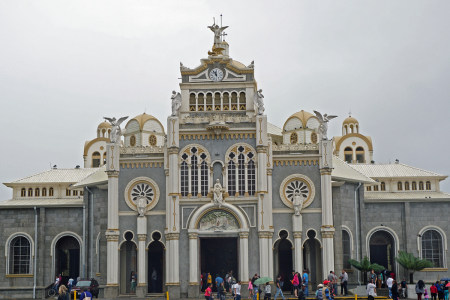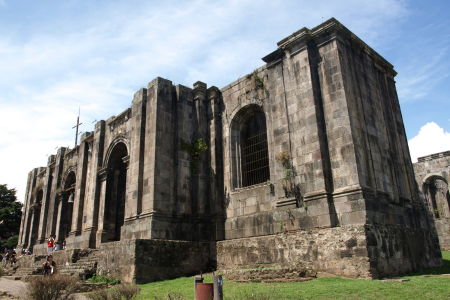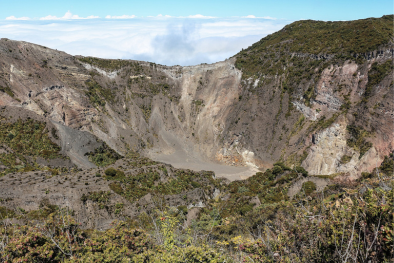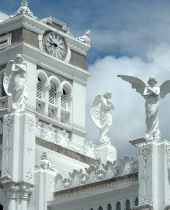To be fair, Cartago can’t really be considered “lost” when it fully exists today as a lively urban hub, but many parts of it have been lost to seismic activity over the years — and it did lose its status as Costa Rica’s capital back in 1823. Indeed, there are many interesting stories to unpack from Cartago’s eventful history, and we haven’t even mentioned the ruins that aren’t actually ruins… but we’ll get to that.

Basílica de Nuestra Señora de los Ángeles (Photo by Mariordo)

Las Ruinas de Cartago (Photo by Daniel Vargas)
Speaking of seismic activity, let’s get to those “ruins.” Just five
blocks from the Basilica are Las Ruinas de Cartago — ruins in the sense that they comprise buildings that were ruined (by that same Santa Monica earthquake), but not technically ruins since they are the remains of a church that was never completed in the first place. The site in question has actually had many rebuilt churches over the centuries, each destroyed by earthquakes, but it took the devastating 1910 event to finally put an end to reconstruction efforts.
As for how Cartago lost is status as the nation’s capital, we need to go back to 1821 when Costa Rica gained its independence from Spain. To compress a nuanced and complex story into a brief passage, Cartago remained inclined to imperial interests, while San José wanted full independence. In short, full independence won out in 1823 and San José has been the capital ever since.
Today, Cartago is the capital of the province that shares its name and remains an important religious destination as well as home of the renowned Costa Rica Institute of Technology. It’s a popular destination for day-trippers from San José and a gateway to the verdant, coffee-rich lands of the Orosi Valley beside the still-active Irazú Volcano.
Today, Cartago is the capital of the province that shares its name and remains an important religious destination as well as home of the renowned Costa Rica Institute of Technology. It’s a popular destination for day-trippers from San José and a gateway to the verdant, coffee-rich lands of the Orosi Valley beside the still-active Irazú Volcano.

Irazú Volcano (Photo by Bernard Gagnon)



